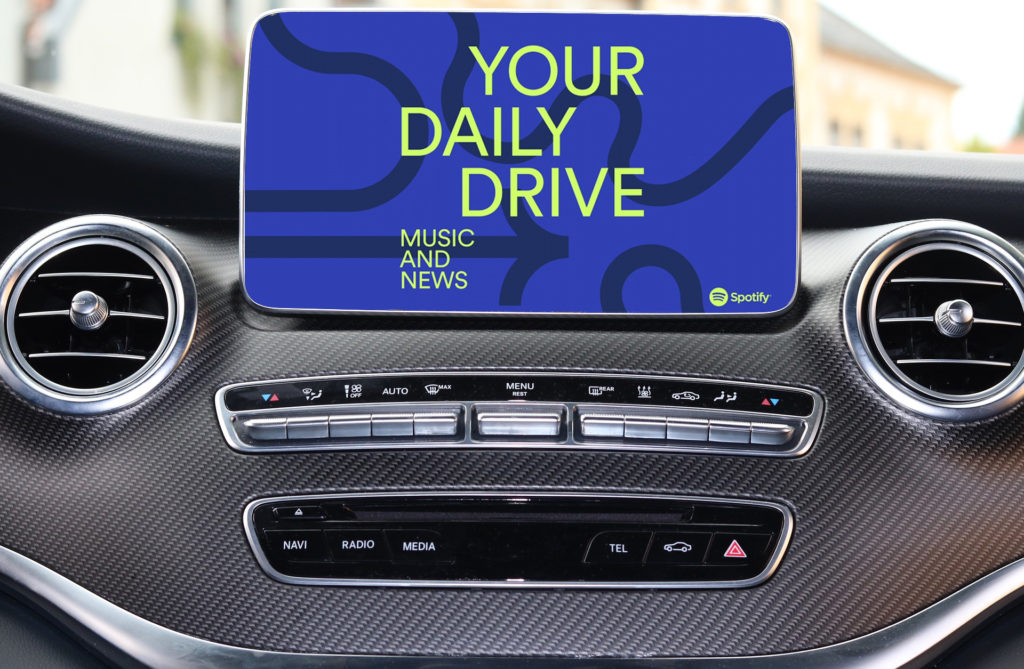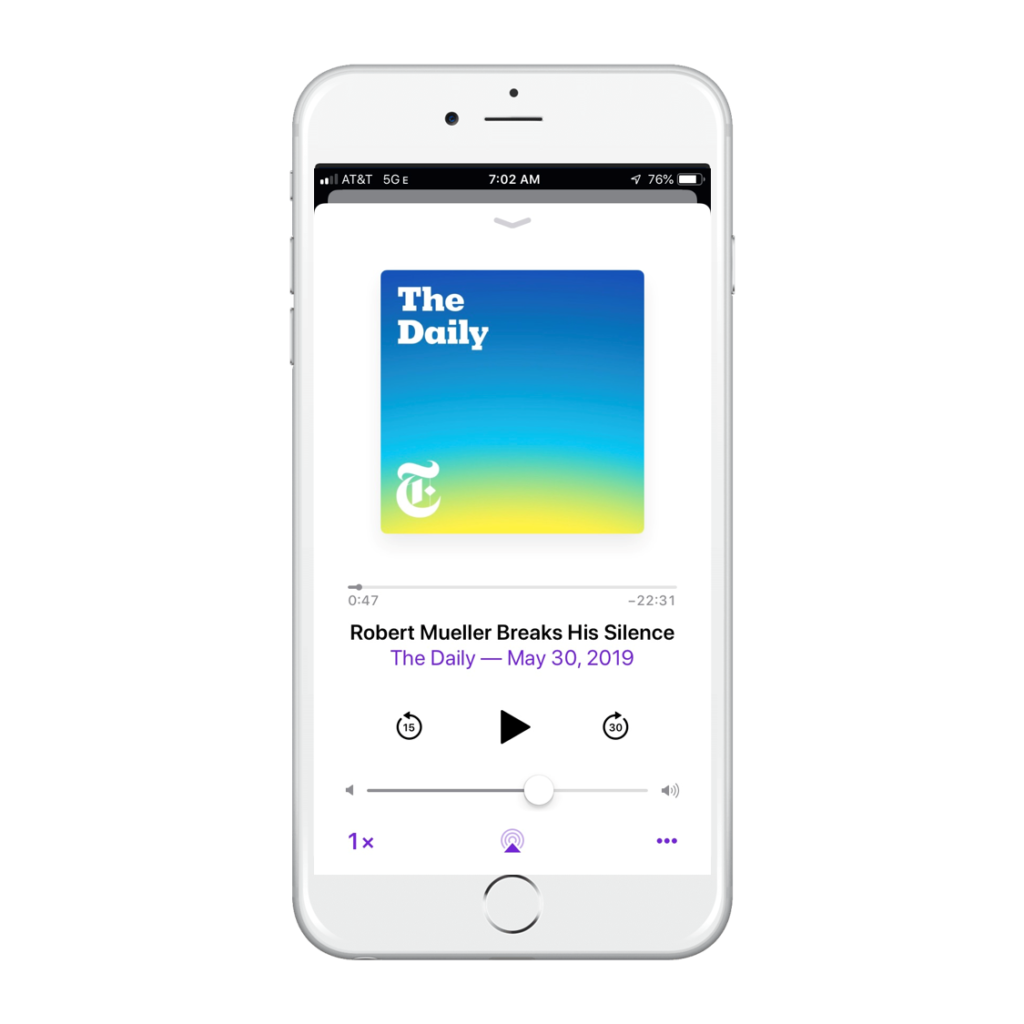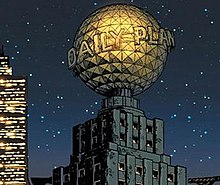
Back in the winter, I attended a “Voice of the Car Summit” and listened to all these digital content creators salivate over the size of the available commuting audience in most big markets.
I was thinking “Duh,” but also was feeling agitated about the prospect of radio programmers having even more competition for the consumer’s time and attention first thing in the morning. Isn’t it competitive enough now that more and more cars allow smartphone connectivity? And soon, those Echo Auto after-market devices will allow Alexa search and discovery to pretty much anything in millions of cars.
I’m losing sleep, and now it’s becoming even more obvious just how radio’s precious morning drive audience is in jeopardy. Digital content creators see both regularity (Monday-Friday listening), as well as the magnetic power of habit as strong incentives to beat radio at its own game.
Take daily news podcasts, for example. Since the The New York Times launched The Daily back in 2017, it has been a true game-changer in the world of podcasts – and perhaps, for morning drive listening on broadcast radio stations.
We may look back on The Daily as the The Serial of this emerging category of on-demand audio. According to The New York Times, this podcasting genre has tripled in size since the debut of The Daily.
Now, similar attempts are being produced by big-time news organizations, trying to gain their own competitive footing in this burgeoning space. There’s ABC News (Start Here with Brad Mielke, who spoke at our “Broadcasters Meet Podcasters” event at Podcast Movement last year), Vox (Today, Explained with Sean Rameswaram), Axios (Pro Rata hosted by Dan Primack), Slate (What’s Next featuring Mary Harris), and the Washington Post (Post Reports hosted by Martine Powers).
Then there are the internationally-based versions. The Canadian Broadcasting Corporation has launched Front Burner (Jayme Poisson), while the Guardian has Today In Focus (Anushka Asthana).
But it’s even more noteworthy that NPR has gotten in the game. Just a few short months after The Daily launched, NPR responded with Up First featuring its Morning Edition team – Rachel Martin, David Green, Steve Inskeep, and Noel King.
featuring its Morning Edition team – Rachel Martin, David Green, Steve Inskeep, and Noel King.
KQED (San Francisco) has launched a daily podcast as well, The Bay, hosted by Devin Katayama. Expect more public radio stations, especially those in larger markets, to take the plunge as well.
Smart move, because public radio and NPR are truly targets of all these podcasts, too. NPR’s Morning Edition franchise is now the top-rated news program in many markets, besting many commercial stations during the day’s most important daypart.
And The Daily, like the others, is going for that audience. In an interesting twist, The New York Times announced the release of a radio version of the podcast last year, available to public radio stations in the afternoon of the day the podcast drops.
The Times’ Samantha Henig told “The Current’s” Tyler Falk last year that because not everyone listens to podcasts, “Radio feels like a natural home for the show.”
How’s that for a 180?
So, how are these podcasts doing? Are they having any impact?
According to Podtrac rankings for May, The Daily was the most popular podcast in America. NPR’s Up First hit an impressive #4 ranking.
Our newest Public Radio Techsurvey is still in the field. But with about “half the precincts reporting,” I peeked at the early returns. And we’re seeing a large audience for these Monday-Friday newsy podcasts among public radio leaders. And yes, as you’d expect, The Daily is the leader of the pack.
For public radio stations, and audiences that love great current events and news programming, the ease and convenience of instant access has to have an erosive impact on the habitual radio listening audience.
Now if you’re a music station, you’re probably breathing a sigh of relief. Too bad, the news station in the building is in for tough times, but at least entertainment shows that play music should be unscathed, right?
Wrong. Just last week, Spotify launched “Your Daily Drive,” a name that leaves nothing to the imagination about who they’re going after. SF Gate’s Amy X. Wang’s headline says it all: “Spotify Invents the Car Radio.” That should get your attention.
“Your Daily Drive” is a new service that melds your preferred music with your favorite podcasts to create what Spotify hopes will be a personalized, customized (wait for it…) “daily drive.”
Spotify’s press release notes that “Americans log 70 billion hours behind the wheel each year, with a big chunk of that time commuting to and from work or school. To help make that time fly by, stay up to date on the world around you, and maybe even rock out to a few timeless classics.”
Spoken word content includes information bursts from NPR and the Wall Street Journal, while the music is a combination of already-selected tunes, along with “yet-to-be-discovered” songs.
“Your Daily Drive” combines Spotify’s treasure trove of user data with some of the content from their recent podcast purchases of Gimlet and Anchor. As Wang reminds (or in the case of most of you reading this blog post, warns), Spotify is “best positioned to challenge terrestrial radio – a space that still commands an audience of 93% of all Americans each week….”
Note both the New York Times and Spotify are both using the “D- word” – daily – in their names. Yes, it’s an old school newspaper term meant to convey both regularity and habitual usage. Whatever newspaper first used that term knew exactly who they were targeting.
word” – daily – in their names. Yes, it’s an old school newspaper term meant to convey both regularity and habitual usage. Whatever newspaper first used that term knew exactly who they were targeting.
And now two giant media brands – with more to come – have radio’s morning drive daypart (afternoons can’t be far away) in their digital crosshairs. And it’s only a matter of time before the sports edition of The Daily reaches the marketplace.
So, what to do?
It starts with not taking your morning drive audience for granted, whether you’re the dependable News/Talker in town, providing traffic and weather together at some point on the clock, or the public radio station on the left end of the FM dial.
And if you’re a music station blessed with an established, popular morning show, it’s essential to re-examine how your hosts are delivering everything from service elements to benchmarks. What’s new on the show, and how can a more personalized, customized experience be created around talent and the local market?
On both types of stations, what is it about live, real-time listening that can be leveraged? And how can shows, hosts, and stations become more visible in their communities to provide a stronger connection?
These digital predators – and let’s call them what they are – are gunning for radio’s morning drive; the most habitual commuters – in the same way Netflix targeted the rich prime time TV viewing audience.
And we know what happened there.
Thanks to David Moore.
- A 2020 Lesson?It Could All Be Gone In A Flash - April 24, 2025
- How AI Can Give Radio Personalities More…PERSONALITY - April 23, 2025
- Can Radio Afford To Miss The Short Videos Boat? - April 22, 2025




I must step in and finally comment about this obsession with the ‘podcast’.
First of all, STOP calling it a PODCAST. It’s an audio stream in addition to the networks OTA broadcasts. This includes all the News outlets you mention. Besides, PODCAST is a namesake of the Apple product line. Automatically you are limiting this resource to a a trademark product line. (and who owns an I-POD anymore???)
Secondly, most of these so called PODCASTS are just a REHASH of the OTA broadcasts.
Thirdly, and this is most important, MOST of the PODCASTS I have personally sampled are B O R I N G ! ! That’s right… BORING!! Hardly any ENTERTAINMENT content, or at least, COMPELLING ENTERTAINMENT!
OTA is FREE and available easily and ready for consumption without having to mess around with a subscription paid for device. That alone makes OTA superior to any other audio technology.
Reason why I’m responding is because most all of you RADIO GENIUSES are always ringing the death bell for OTA broadcasting.
I am pleading with you to STOP this practice. All media can comfortably exist together in the modern technology landscape.
Just saying…
BIG John Libynski
KQSS FM – Globe/Miami, AZ
John, thanks for writing and for the heartfelt comment. I don’t think I’m a “death kneller” (if that’s even a term). With many of these attackers, there is opportunity for radio. NPR, to its credit, may not have been first-in with its morning podcast, but their entry is doing very well,, proving that broadcasters can master other platforms.
As for the term “podcast,” I agree with you it’s not the best platform brand. But neither of us has the yank to do anything about that.
The podcasts I talked about are original content. There may be “work parts” from OTA newscasts and features, but most are created specifically for the podcast.
As for boring podcasts, with 800,000 in the market (and rising), there are some really bad ones. But there are some really good ones, too. You just have to look for them.
I appreciate you reading our blog and commenting. And I hope you continue to do so.
Thanks,
Fred
Having worked in terrestrial radio and digital radio, a maker of podcasts, etc.. I personally see no difference as a listener – as a listener – between digital and terrestrial. In fact, digital is a much cleaner signal than FM these days, better even than Satellite. And if you’re a music lover, like me, a clear signal is what you need. I don’t need weather, sports, local news or goofy deejays. I don’t need repetitive, obnoxious, uninvolving commercials. So, whether it’s my own 24/7 stream, or SomaFM’s stations or Radio Paradise … or this cool Jazz station I found emanating from France…. I just have no need for local radio. Imagine if there were no more radio towers. No more terrestrial radio…. none at all. All current AM/FM stations were internet only… who would be able to compete in a land where everything is digital only? UHF went away. It won’t be long before AM/FM goes away, too.
Jayson, I’m sure many will agree with you – and disagree with you, as well (which is why we love writing this blog). I believe there is a “there there” for local radio – at least, in theory. But it has to be done well, providing deep connections to locals, their community, and hometown radio stations and their personalities. The fact so many stations have been stripped down to the studs doesn’t mean there aren’t still others that matter very much in their hometowns. I think streaming, satellite, and terrestrial radio can co-exist and be successful, assuming each understands the unique qualities they bring to the media experience. Thanks for the comment.